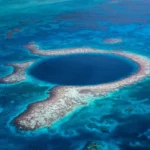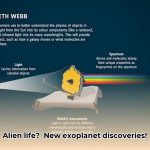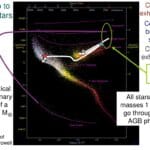Have you ever imagined planets drifting in the black void of space, solitary nomads unbound to any star? These “rogue planets” are more than science fiction; they’re real celestial bodies challenging our fundamental understanding of planetary formation and the very nature of habitability. This exploration reveals the cutting-edge techniques scientists use to hunt these elusive worlds, delves into the competing theories surrounding their origins, and even ponders the tantalizing possibility of life thriving in the most unexpected corners of our galaxy.
Rogue Planets: Unveiling the Secrets of Starless Worlds
Rogue planets, also known as free-floating planets or interstellar planets, are planetary-mass objects that do not orbit a star. Instead, they wander the galaxy alone, traveling vast distances between stellar systems. Their existence challenges our conventional understanding of how planets form and raises profound questions about the prevalence of planetary bodies throughout the universe.
Defining a Rogue Planet: More Than Just a Planet Without a Star
Defining a rogue planet requires more than simply stating its lack of a stellar companion. These objects, often shrouded in mystery, present unique characteristics:
- Planetary Mass: Rogue planets possess a mass comparable to that of planets within our solar system, ranging from smaller than Earth to several times the mass of Jupiter.
- Lack of Stellar Orbit: Unlike conventional planets, rogue planets are not gravitationally bound to a star and follow their own independent trajectories through interstellar space.
- Cold Temperatures: Far removed from the warmth of a star, rogue planets are typically very cold, with surface temperatures plummeting far below freezing.
- Potential for Atmospheres: Despite the cold, some rogue planets may possess thick atmospheres capable of trapping internal heat, potentially creating habitable conditions beneath the surface.
The importance of studying rogue planets lies in their ability to reshape our understanding of planetary formation, galactic dynamics, and the potential for life beyond our solar system.
Gravitational Microlensing: A Cosmic Magnifying Glass for Rogue Planet Discovery
Detecting rogue planets presents a formidable challenge. Because they emit little to no light of their own, traditional methods of planet detection are ineffective. Instead, astronomers rely on a phenomenon called gravitational microlensing.
Imagine a distant star acting as a background light source. When a rogue planet passes directly between the star and Earth, the planet’s gravity acts as a lens, bending and magnifying the star’s light. This creates a temporary brightening of the star, which astronomers can detect.
Gravitational microlensing events are rare and fleeting, requiring constant monitoring of millions of stars. However, this technique has proven to be remarkably successful in uncovering these elusive worlds.
Future missions, such as the Nancy Grace Roman Space Telescope (NGRST), will revolutionize rogue planet detection. NGRST’s advanced microlensing capabilities are expected to discover thousands of new rogue planets, providing invaluable data on their population, distribution, and characteristics.
Origins of the Outcasts: Exploring the Formation Theories
The origins of rogue planets remain a topic of intense debate among scientists. Two primary theories attempt to explain their formation:
- Planetary Ejection: This theory suggests that rogue planets initially formed within a star system, orbiting a central star like conventional planets. However, through gravitational interactions with other planets or passing stars, they were violently ejected from their solar system, becoming free-floating wanderers.
- In-Situ Formation: This alternative theory proposes that rogue planets formed independently, directly from collapsing clouds of gas and dust in interstellar space. Similar to the way stars are born, these clouds may have fragmented into smaller clumps, eventually forming planetary-mass objects.
Distinguishing between these two formation scenarios is a major goal of ongoing research. By studying the properties of rogue planets, such as their size, composition, and orbital characteristics, scientists hope to unravel the mysteries of their origins.
How Many Lonely Worlds Roam the Galaxy?
Estimating the population of rogue planets in the Milky Way galaxy is a daunting task. Current estimates vary widely, ranging from billions to trillions. This uncertainty reflects the difficulty of detecting these elusive objects and the limitations of current observational techniques.
Despite the challenges, recent studies suggest that rogue planets may be surprisingly common, potentially outnumbering stars in our galaxy. This implies that planetary formation may be a more efficient process than previously thought, with a significant fraction of planets ending up as free-floating objects.
Future missions like NGRST will provide more accurate estimates of the rogue planet population, helping us to understand their true abundance and distribution throughout the galaxy.
Life Without a Star: Could Rogue Planets Harbor Life?
The possibility of life existing on rogue planets is one of the most intriguing questions in astrobiology. At first glance, the prospect seems unlikely. Without a star to provide warmth and energy, rogue planets are typically extremely cold and inhospitable.
However, some scientists speculate that certain conditions could allow for the existence of subsurface oceans on rogue planets. These oceans could be kept liquid by internal heat sources, such as radioactive decay in the planet’s core or tidal forces generated by a moon.
If such oceans exist, they could potentially harbor life, similar to the extremophile organisms found near hydrothermal vents on Earth’s ocean floor. These organisms thrive in the absence of sunlight, obtaining energy from chemical reactions in the surrounding environment.
The discovery of life on a rogue planet would revolutionize our understanding of habitability and the potential for life beyond Earth.
Future Missions: Unlocking the Secrets of Rogue Planets
The future of rogue planet research is bright, with several upcoming missions poised to make groundbreaking discoveries. The Nancy Grace Roman Space Telescope (NGRST) is at the forefront of this effort, with its advanced microlensing capabilities and wide field of view, NGRST will conduct a comprehensive survey of the Milky Way, searching for rogue planets with unprecedented sensitivity.
Other future missions, such as the James Webb Space Telescope (JWST) and the Extremely Large Telescope (ELT), will also contribute to our understanding of rogue planets. These telescopes will be used to study the atmospheres and compositions of known rogue planets, providing valuable clues about their formation and potential habitability.
By combining data from multiple missions and employing innovative analytical techniques, scientists are poised to unlock the secrets of these enigmatic wanderers and gain a deeper appreciation of the diversity and complexity of our galaxy.
Distinguishing Rogue Planets from Brown Dwarfs: A Cosmic Challenge for the Roman Space Telescope
Rogue planets and brown dwarfs both occupy a unique niche in the cosmos, existing as free-floating celestial objects unattached to any star. However, despite their similarities, they represent distinct categories of objects with different formation mechanisms and properties. Distinguishing between them requires high-precision measurements of mass, temperature, and atmospheric composition, a challenge that the Nancy Grace Roman Space Telescope (NGRST) is uniquely equipped to address.
Rogue Planets vs. Brown Dwarfs: Defining the Key Differences
The fundamental difference between rogue planets and brown dwarfs lies in their formation. Rogue planets are believed to form within protoplanetary disks around stars, similar to conventional planets, before being ejected into interstellar space. Brown dwarfs, on the other hand, form independently, directly from collapsing clouds of gas and dust, much like stars, but lack the mass needed to sustain nuclear fusion.
This difference in formation leads to significant differences in their properties:
- Mass: Brown dwarfs are typically more massive than planets, with masses ranging from 13 to 80 times the mass of Jupiter. Rogue planets, by definition, have masses below this threshold.
- Temperature: Brown dwarfs are hotter than rogue planets due to residual heat from their formation. They can emit a faint glow in the infrared spectrum, making them easier to detect.
- Atmospheric Composition: Brown dwarfs often exhibit different atmospheric compositions than planets, with higher concentrations of certain elements and molecules.
Overcoming the Observational Challenges
Distinguishing between rogue planets and brown dwarfs poses significant observational challenges. Both types of objects are faint and difficult to detect, emitting little visible light. Astronomers must rely on indirect methods, such as gravitational microlensing and infrared surveys, to identify them.
However, these methods alone are often insufficient to definitively classify an object as a rogue planet or a brown dwarf. Precise measurements of mass and temperature are needed.
The Nancy Grace Roman Space Telescope: A Game-Changer for Classification
The Nancy Grace Roman Space Telescope (NGRST) will revolutionize the study of rogue planets and brown dwarfs with its advanced capabilities. NGRST’s wide-field-of-view and high sensitivity will allow it to detect a much larger number of these objects than previously possible.
Moreover, NGRST will be equipped with instruments capable of measuring the masses and temperatures of rogue planets and brown dwarfs with unprecedented precision. This will enable astronomers to definitively distinguish between the two types of objects and to study their properties in detail.
To effectively differentiate between rogue planets and brown dwarfs, NGRST will employ a multi-faceted approach:
- Microlensing Event Detection: NGRST will detect microlensing events caused by rogue planets and brown dwarfs passing in front of distant stars. By analyzing the shape and duration of these events, astronomers can estimate the mass of the lensing object.
- Spectroscopic Analysis: NGRST will use spectroscopy to analyze the light emitted by rogue planets and brown dwarfs. This will reveal their temperature and atmospheric composition, providing valuable clues about their formation and evolution.
- Mass Determination: By combining microlensing and spectroscopic data, astronomers can determine the masses of rogue planets and brown dwarfs with high accuracy. Objects with masses above approximately 13 Jupiter masses will be classified as brown dwarfs, while those below this threshold will be classified as rogue planets.
- Statistical Analysis: NGRST will collect data on a large number of rogue planets and brown dwarfs, allowing astronomers to perform statistical analyses of their populations. This will help to refine our understanding of their formation and distribution throughout the galaxy.
Implications for Planetary Formation Theories
The NGRST’s observations of rogue planets and brown dwarfs will have profound implications for our understanding of planetary formation. By providing a more complete census of these objects, NGRST will help to test and refine existing theories of planetary formation and to explore new possibilities.
For example, if NGRST discovers a large number of low-mass rogue planets, this would support the theory that planetary ejection is a common process. On the other hand, if NGRST finds that most rogue planets are relatively massive, this would suggest that in-situ formation is a more important mechanism.
The Future of Rogue Planet Research: Key Missions and Discoveries on the Horizon
The study of rogue planets is a rapidly evolving field, with new discoveries and insights emerging at a pace that is staggering. As we enter a new era of space exploration and astronomical observation, the future of rogue planet research is brighter than ever before. Upcoming missions, innovative technologies, and interdisciplinary collaborations promise to unlock the secrets of these elusive wanderers and to revolutionize our understanding of the galaxy.
The Importance of Rogue Planet Research: Unraveling the Mysteries of the Galaxy
Rogue planets, once considered rare and exotic objects, are now believed to be incredibly abundant, potentially outnumbering stars in the Milky Way galaxy. Recent observations suggest that trillions of these “lonely wanderers” may roam the interstellar void, challenging our conventional understanding of planetary systems and the formation of planets.
The study of rogue planets is crucial for several reasons:
- Planetary Formation: Rogue planets provide valuable clues about the processes that govern planetary formation. By studying their properties and distribution, we can gain insights into the mechanisms that lead to the creation of planets, both within and outside of star systems.
- Galactic Dynamics: Rogue planets can influence the dynamics of the galaxy. Their gravitational interactions with other objects can affect the distribution of stars and gas, shaping the structure of spiral arms and triggering star formation.
- Habitability: Despite their lack of a star, some rogue planets may be capable of harboring life. If they possess subsurface oceans or thick atmospheres, they could potentially provide habitable environments for extremophile organisms.
- Exploration: Rogue planets could serve as potential waypoints for future interstellar missions. Their proximity to our solar system and their abundance in the galaxy make them attractive targets for exploration and resource extraction.
Gravitational Microlensing: A Powerful Tool for Discovery
Gravitational microlensing has emerged as the primary technique for detecting rogue planets. This method relies on the fact that massive objects, such as planets, can bend and magnify the light from distant stars.
When a rogue planet passes in front of a background star, its gravity acts as a lens, focusing the star’s light and causing a temporary brightening. By monitoring millions of stars, astronomers can detect these fleeting microlensing events and identify the presence of rogue planets.
The effectiveness of gravitational microlensing has been demonstrated by recent discoveries of rogue planets ranging in size from Mars to Jupiter. As our telescopes become more powerful and our monitoring programs more sophisticated, we can expect to discover many more rogue planets using this technique.
Competing Theories: Ejection vs. In-Situ Formation
The birthplaces of rogue planets remain a mystery, with two primary theories vying for acceptance:
- Ejection: The traditional view holds that rogue planets formed within star systems, orbiting a central star like conventional planets. However, through gravitational interactions with other planets or passing stars, they were violently ejected from their solar systems, becoming free-floating wanderers.
- In-Situ Formation: An alternative theory proposes that rogue planets formed independently, directly from collapsing clouds of gas and dust in interstellar space. This is supported by the recent discovery of rogue planets surrounded by debris disks, suggesting that they may have formed in isolation, without the need for a central star.
Determining the relative importance of these two formation mechanisms is a key challenge for rogue planet research. Future observations and theoretical models will be needed to resolve this debate.
The Nancy Grace Roman Space Telescope: A New Era of Discovery
The Nancy Grace Roman Space Telescope (Roman), set to launch in the coming years, promises to revolutionize our understanding of rogue planets. With its enhanced microlensing capabilities and wide field of view, Roman will be able to conduct a comprehensive survey of the Milky Way, searching for rogue planets with unprecedented sensitivity.
Roman is expected to discover hundreds, perhaps thousands, of new rogue planets, providing invaluable data on their prevalence, distribution, and properties. This will allow astronomers to refine their estimates of the rogue planet population and to test competing theories of their formation.
Future Research Directions: Unlocking the Secrets of Habitability
Future research efforts will focus on characterizing the atmospheres of rogue planets and assessing their potential for habitability. This will involve using powerful telescopes to search for biosignatures, such as the presence of water, methane, or oxygen, in their atmospheres.
If evidence of life is found on a rogue planet, this would have profound implications for our understanding of biology and the potential for life beyond Earth. It would also challenge our conventional view that life requires a star to survive.
Formation Theories Compared: Unveiling the Origins of Rogue Planets
Understanding the origins of rogue planets is paramount to unraveling the mysteries of planetary formation and the evolution of galaxies. These enigmatic wanderers challenge our conventional understanding of how planets are born and how they interact with their environments. By comparing the two primary theories that attempt to explain their formation, we can gain a deeper appreciation of the complexity and diversity of the cosmos.
Rethinking Planetary Formation: The Rogue Planet Challenge
Rogue planets have forced scientists to rethink their models of planetary formation. The traditional view holds that planets form within protoplanetary disks around stars, gradually accreting gas and dust over millions of years.
However, the existence of rogue planets suggests that this process is not always so straightforward. Some planets may be ejected from their star systems through gravitational interactions, while others may form independently, without the need for a central star.
This challenge to our conventional understanding of planetary formation has spurred a new wave of research, aimed at exploring the diverse pathways that can lead to the creation of planets.
Gravitational Microlensing: A Key to Unlocking the Secrets of Rogue Planets
Gravitational microlensing has emerged as a key technique for detecting and studying rogue planets. Because these objects do not emit light, they are invisible to traditional telescopes. However, when they pass in front of a distant star, their gravity can bend and magnify the star’s light, creating a temporary brightening that can be detected from Earth.
By analyzing the shape and duration of these microlensing events, astronomers can estimate the mass and distance of the rogue planet, providing valuable clues about its nature and origin.
Ejection vs. In-Situ Formation: Two Competing Theories
Two primary theories attempt to explain the origin of rogue planets:
- Ejection: This theory proposes that rogue planets formed within star systems, orbiting a central star like conventional planets. However, through gravitational interactions with other planets or passing stars, they were violently ejected from their solar systems, becoming free-floating wanderers. Planetary collisions or gravitational tug-of-wars can lead to ejection.
- In-Situ Formation: This alternative theory suggests that rogue planets formed independently, directly from collapsing clouds of gas and dust in interstellar space. This is supported by recent observations using the James Webb Space Telescope (JWST), which have uncovered JUMBOs (Jupiter-Mass Binary Objects), pairs of rogue planets traveling together in binary systems.
The Nancy Grace Roman Space Telescope: A Future of Discovery
The Nancy Grace Roman Space Telescope (NGRST), with its advanced technology, will enhance the ability to refine existing formation theories.
The Roman Space Telescope will revolutionize our understanding of rogue planets and their origins. NGRST, with its advanced technology, will enhance the ability to refine existing formation theories. By providing a more complete census of these objects and by enabling detailed studies of their properties, Roman will help to unravel the mysteries of their formation and to shed new light on the processes that shape the galaxy.
















